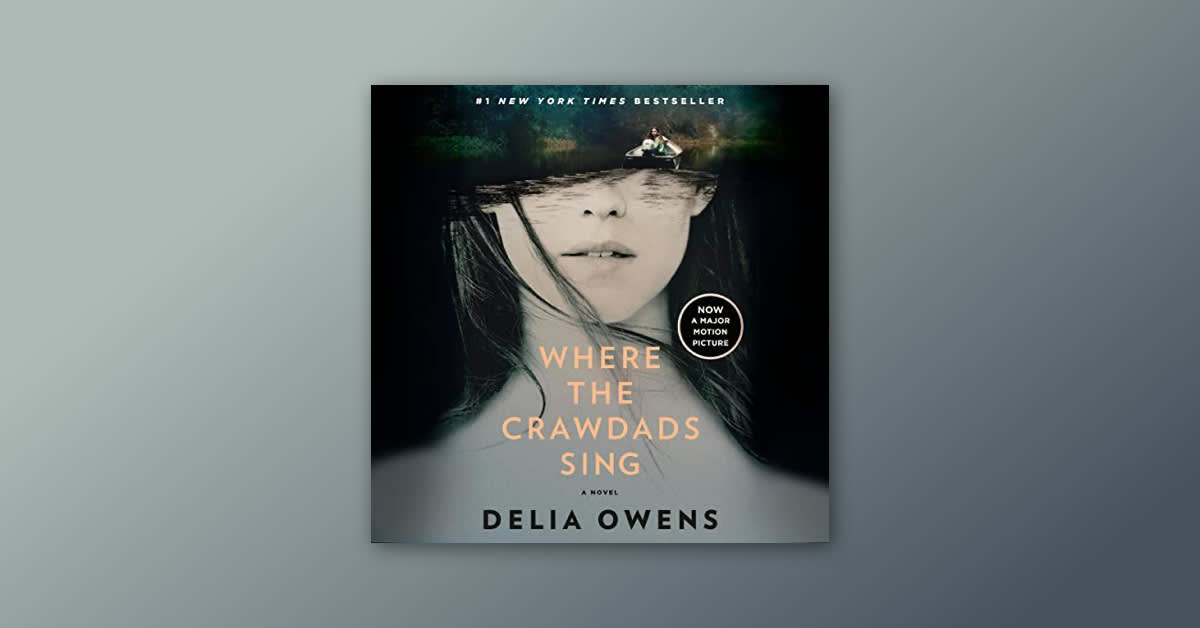One of the most beloved sci-fi adventure films ever made, Stephen Spielberg's juggernaut Jurassic Park is a feat of animatronic work, impeccable casting, and wildly perfect pacing. It's a film that just holds up, year after year, watch after watch. No less incredible, still, is the novel on which it's based, Michael Crichton's masterpiece of the same name. But just how similar are the two? If you're looking for the ins-and-outs of the major differences between Jurassic Park the book and the movie, we've got you covered.
Warning: This article contains spoilers for both the novel and film adaptation of Jurassic Park.
Are the Jurassic Park movies based on books?
The first two films in the Jurassic Park franchise (Jurassic Park and The Lost World) are both based on novels written by acclaimed sci-fi and techno-thriller author Michael Crichton; the subsequent movies (Jurassic Park III, Jurassic World, Jurassic World: Fallen Kingdom, and the forthcoming Jurassic World: Dominion) as well as the animated Netflix original Camp Cretaceous are set in the same continuity but were not derived from preexisting source material. (Nevertheless, you can still spot characters, concepts, and scenes from Crichton's original story throughout these installments.)
First published in 1990, Michael Crichton's Jurassic Park is a sharp and engrossing cautionary tale about the perils of unchecked scientific ambition and the commodification of natural life. Throughout the novel, Crichton, who received his MD from Harvard Medical School in 1969, wields his knowledge of biology to craft a conceit that, despite all odds, came across as entirely possible. By extracting dinosaur DNA from insects that had been suspended and fossilized in amber, a team of scientists at InGen are able to clone the prehistoric creatures through a feat of genetic engineering. Aware of the massive financial opportunity presented by this discovery, founder and CEO John Hammond sets out to open a tourist attraction with the newly resurrected creatures. He calls in a team of consultants (including paleontologist Alan Grant, paleobotanist Ellie Sattler, and mathemician Ian Malcolm) to review the park's safety protocols before it opens to the public. But there's one small hitch. To quote Malcolm, Life breaks free. Life expands to new territories. Painfully, perhaps even dangerously. But life finds a way.
Crichton's groundbreaking work of fiction generated a studio bidding war before it even hit the shelves. Ultimately, Universal Studios won the rights, with Hollywood legend Steven Spielberg (who had directed box office hits including Jaws, E.T., and the Indiana Jones series) leading the way.
Following the massive success of Jurassic Park, excitement began to mount regarding the potential of a sequel. There was just one problem: Michael Crichton had no intention of writing one. But after pleas from fans reached a fever pitch and Universal set their aim on producing a follow-up film, Crichton acquiesced and decided to revisit the world he had so expertly created in his first novel after all. The result, The Lost World, was a smart continuation that saw the resuscitation of Ian Malcolm, who had been presumed dead at the conclusion of Crichton's first installment (more on that later), and a whole new host of paleontological threats on Isla Sorna. Sorna, also known as Site B,
was the home of InGen's production facility, where dinosaurs were cloned, hatched, and grown. And while the original Park was destroyed, it seems some of the creatures were left behind...
The film adaptation is loosely based on Crichton's sequel. While some elements and characters remain, ideation for The Lost World script—written by David Koepp, who also penned the adaptation of Jurassic Park—was in the works even before Crichton finished the novel. Still, Koepp did refer to Crichton's story in writing the screenplay, and while the novel and its film counterpart share far more differences than similarities, some of the book's most memorable scenes (including an edge-of-your-seat chapter that involves a T. rex and a trailer teetering over the edge of a cliff) found their way to the big screen.
What are the differences between the Jurassic Park book and the movie?
Most of the differences between the film and the novel are in tone, characterization, and in some plot devices or moments of action.
For starters, the film is quite tame compared to the book. Remember: Michael Crichton was an MD, so trust that his depictions of the harm that can befall the human body are as detailed as they are horrific. Seriously, there are some truly gory moments housed in the novel. And while the film also sees quite a few violent encounters (hello, Mr. Arnold's disembodied arm!) and scares, Spielberg's adaptation feels far more like an adventure film than the sci-fi-infused cautionary tale that inspired it. And it's not just humans that meet a most brutal end: from Grant's use of poison eggs to kill raptors in the novel to Muldoon's rocket launcher, the world of Michael Crichton's Jurassic Park is far and away darker and more gruesome than that of the film.
Crichton's Jurassic Park was also far more technical than the film, engaging more with the hardcore science elements to set up one of the most chillingly plausible discoveries in fiction.
One of the most memorable scenes from the novel, which sees Dr. Grant, Lex, and Tim narrowly escape the jaws of a T. rex on a river raft, is notably cut from the film. Though it's a tense and truly terrifying moment that we would've loved to see on the big screen, it's also one that, understandably, would've proved to be quite challenging to shoot.
Still, the plot of Jurassic Park largely remains the same: unbridled human ambition and avarice challenges the natural order, and the natural order fights back.
How is the opening scene of Jurassic Park different from that of the book it's based on?
Both the opening scene of the novel Jurassic Park and its film adaptation set a chilling, ominous vibe: that being said, it's only in the film that we receive an actual glimpse (or at least a sound) of the prehistoric threats to come, as the first few moments actually take place on the Isla Nublar as the park is being set up.
The scene that opens the prologue of Michael Crichton's Jurassic Park sets a rather grim, tense tone for the story. Dr. Roberta Carter, a visiting physician in Costa Rica, receives an unexpected patient, a young man emergency-transported by helicopter accompanied by InGen's PR manager, Ed Regis. Though Regis claims the employee was injured in a backhoe accident, the wounds are more consistent with that of an animal attack. When Regis is told to remain outside the operating room, the dying man reveals what actually happened: his wounds were inflicted by a "raptor." Though the claim perplexes Dr. Carter, with the man's skin shredded down to the bone and the lacerations coated in a foul-smelling saliva, it's evident that his injuries were certainly not sustained by mechanical means.
(Fans of The Lost World film adaptation might be more familiar with the first chapter of Jurassic Park, entitled "Almost Paradise." It begins with a wealthy family on vacation at the Cabo Blanco Biological Reserve in Costa Rica. When their daughter wanders off on the beach, she's attacked by a group of small, lizard-like dinosaurs called Procompsognathus, more commonly referred to as "Compys." Though this scene was not included in the movie adaptation of the first novel, it made a compelling opener for the 1997 sequel film.)
The movie's opening scene instead takes us right to Isla Nublar, the home of Jurassic Park, as a team of employees works to offload creatures into their enclosures. Led by Robert Muldoon, the park's game warden, the team methodically attempts to release a velociraptor into her paddock. After the clever dino charges in its cage, causing the enclosure gate to fail, chaos ensues: the raptor attempts to pull an employee into her cage with her vicious jaws as Muldoon attempts in vain to save the man's life. The rest of the crew gathers around the raptor's cage, jolting her with electrical prods before Muldoon implores, "Shoot her! Shoot her!" Accompanied by a dark, stormy landscape and exquisite scoring by the incomparable John Williams, it certainly captures the same sense of foreboding as the novel it is based on.
Who are the main characters of Jurassic Park? And how do the film's depictions differ from the book's?
The main characters of Jurassic Park are paleontologist Alan Grant, his dig-mate and paleobotanist Dr. Ellie Sattler, consulting mathematician and chaos theory expert Ian Malcolm, founder of InGen John Hammond, and Hammond's young grandchildren, Lex and Tim Murphy. There are a number of differences in characterization in the film and the novel, the most noteworthy of which is a near rewrite of the character of John Hammond; it's also worth noting that a different assortment of characters survive the events of the Jurassic Park incident in the film and the book.
Dr. Alan Grant
Easygoing and calm in crisis, Dr. Alan Grant is perhaps the best companion to accompany you through the tumultuous events of Jurassic Park. Grant is a noted paleontologist and professor at University of Denver. He works at dig sites in Montana and rejects the stodgy demeanor he finds typical of his colleagues in academia.
In the novel, Grant is laidback, rugged, and outdoorsy. Crichton describes Grant as being in his 40s, "barrel-chested," and bearded. He is also a widower, his wife having died years before the book opens; though fans of the movie might note the romantic tension between Dr. Grant and Dr. Sattler (and Crichton's cast makes similar observations), the relationship in the novel is strictly a professional one between mentor and mentee.
In the film franchise, Grant is slightly younger (about mid-30s) and perhaps a bit less brawny. As portrayed brilliantly by Sam Neill, however, Grant is incredibly passionate about his work and intensely focused. When he first encounters a living, breathing brachiosaurus early in the film, he doubles over in awe, his eyes welling with tears.
Like Crichton's characterization, Grant maneuvers the constant threats of Jurassic Park with prudence, wielding his knowledge of dinosaurs to stay safe. Unlike his predecessor in the novel, however, the movie's Dr. Grant is decidedly not a fan of youngsters ("They're noisy, they're messy, they're expensive, they smell..."). Nevertheless, after his time spent fighting to survive alongside Lex and Tim, he seems to warm to children quite a bit.
Dr. Ellie Sattler
Dr. Ellie Sattler is a paleobotany student working alongside Dr. Grant at the Snakewater dig site in Montana. In the novel, her age is stated as 24.
Though described as young and quite beautiful, Sattler is not to be underestimated. She's incredibly intelligent and courageous, quickly identifying and alerting others to the aesthetic use of toxic plants around Jurassic Park. For example, when a stegosaurus falls ill, Sattler stays behind with the ailing herbivore to investigate the cause.
Spielberg expanded the role of Dr. Sattler in his adaptation of Jurassic Park, and the impeccably cast Laura Dern contributed character work that made Ellie a feminist hero to a generation of young women. Like the novel's version of the character, the movie's Dr. Sattler is smart and bold; in the film, however, Ellie is a bit older, an established doctor of paleobotany who is scouted by John Hammond for her opinion on the park and its plant life.
Dr. Sattler and her dig-mate also have some major chemistry in the film adaptation that's distinctly absent from the novel. In the movie, their banter is flirtatious; when Dr. Malcolm asks if Grant and Sattler are together, Grant answers in the affirmative.
Dr. Ian Malcolm
Like Grant and Sattler, Dr. Ian Malcolm is hired by InGen as a consultant on Jurassic Park. His field of specialty is mathematics, and he is a one of the foremost voices on the concept of chaos theory. As Malcolm dutifully explains time and again, chaos theory seeks to understand the underlying order of volatility, unpredictability, and confusion. It follows, then, that Malcolm is far from confident about the safety and feasibility of Jurassic Park's opening to guests.
The film and book diverge in one major way in regards to Malcolm's character. In the novel, he is scooped up by the jaws of a ferocious T. rex before being thrown to the ground. His injuries are critical and his health continues to decline throughout the rest of the story. By the book's end, he is presumed dead. Though Malcolm is also tossed by the escaped T. rex in the film adaptation, his wounds are less severe and his condition less dire.
While the Dr. Ian Malcolm of the novel and the film share a cynical outlook and rather skeptical view of Hammond's park, Jeff Goldblum's Malcolm is, well, a bit cooler. Both iterations of Malcolm are said to dress almost entirely in black, and Goldblum brought a kind of cool swagger to the role that gave the mathematician a rock star edge.
John Hammond
John Hammond is the CEO of InGen, the bioengineering corp behind Jurassic Park. If you've watched the film adaptation of Jurassic Park but have yet to listen to the book, you're in for a shock when it comes to the character of John Hammond. Unlike the endlessly lovable portrayal brought to the big screen by Richard Attenborough, the Hammond of Crichton's story is far from endearing.
Driven by a consuming sense of greed, the novel's John Hammond is among the primary antagonists. In a plot line that's absent from the film entirely, Hammond refuses to pay tech expert Dennis Nedry fairly for his work on the park's security system while keeping him in the dark about what exactly InGen is planning. It's this decision that pushes Nedry toward accepting an offer from Lewis Dodgson (whose role in the novel is larger than his fedora-wearing on-screen counterpart), who represents competitor BioSyn.
Desperate to open the park and garner a profit, Hammond is completely blinded by avarice, pays little mind to safety protocols, and often finds himself irritated by the doubts of his consultants. He also is not the kindly grandfather of the film; in fact, he seems to be indifferent about the well-being of Tim and Lex.
The book and film diverge majorly when it comes to Hammond's character, not only in personality, but in the events that transpire. Hammond dies a rather miserable, violent death in the novel, falling down a hill where he breaks his ankle. Unable to move, Hammond is surrounded by a pack of Compys, who begin to eat him alive. In his last moments, lulled by the narcotic effects of the Compy venom, Hammond still believes that Malcolm was incorrect in his assessment of the park's flaws. In the film, however, Hammond makes it safely off the island, alongside Grant, Malcolm, Sattler, and his two grandchildren, and comes to the decision not to endorse his own park after all.
Tim Murphy
In the novel, Tim is the older of the Murphy siblings, Hammond's grandchildren who are invited to the park to get a child's opinion on its wonders (and, Hammond reasons, to convince Donald Gennaro that the park is safe and profitable to open). Tim is 11-years-old, incredibly enthusiastic about dinosaurs, and a computer whiz whose know-how comes in handy when it comes to accessing the park's mainframe and reactivating the electric fences.
When adapting Jurassic Park for the big screen, a decision was made during casting to swap the ages of Tim and Lex. In the film, Tim, now the younger of the Murphy kids, is portrayed by Joseph Mazzello. In Hollywood's interpretation, Tim has 20/20 vision: he's missing the spectacles Crichton describes him as wearing in the novel.
Lex Murphy
Crichton's Lex is around age eight and thoroughly uninterested in dinosaurs—she's wrapped up in sports. At first, she finds Jurassic Park to be a rather dull destination and rags on her brother for his paleontological fascination. In the novel, she is initially characterized as a bit whiny, complaining frequently and crying often. Still, as she's a very young child in an environment that would be terrifying for anyone, her fears and gripes are especially understandable.
In addition to opting to age Lex up, Spielberg also made some tweaks to the character that allowed for her to have a richer, more involved role in the story. Portrayed by Ariana Richards, big screen Lex is the computer genius (though she prefers the term "hacker") who manages to access the park's digital security system and save the day. Perhaps in a nod to her print predecessor, Lex first appears on screen wearing a baseball cap.
Dennis Nedry
Dennis Nedry, portrayed by Seinfeld's Wayne Knight, is a programmer hired by InGen to work on a clandestine project that would become Jurassic Park. Nedry was unsatisfied with the pay, the workload, and the secretive nature of his employers—so when competitor Biosyn offered him a hefty payout for some corporate espionage in the form of stolen dinosaur embryos, he accepted.
While Nedry's death in the film and the novel are nearly identical, it's worth noting that the source material is not for the faint of heart. Crichton describes this antagonist's grisly fatal encounter with a venom-spewing Dilophosaurus in vivid, stomach-churning detail.
Donald Gennaro
In Spielberg's Jurassic Park, Donald Gennaro is quite unlike his novel counterpart. Some of the film's characterization of Gennaro (or, at least, details of his on-screen death) seem lifted from that of Ed Regis, InGen's PR rep who is a player in the novel totally absent from the Hollywood adaptation. In the film, Gennaro meets his end in a way that's quite undignified. Deserting Lex and Tim in their Land Cruiser when the T. rex escapes its paddock, Gennaro flees to a nearby restroom, where he locks himself in a stall and huddles on top of a toilet. The dinosaur follows, knocks aside the structure, and chomps down. (In the novel, it's Regis who is entrusted with the Murphy children and abandons them in a similar fashion before being swallowed whole by a prehistoric predator.)
In the novel, Gennaro not only survives, but undergoes substantial character growth and demonstrates heroic abilities in his own right. He works alongside Ellie and Alan to survey the wild raptor nest and discern the possibility of their migration off-island.
Dr. Henry Wu
In the first film in the Jurassic Park series, Dr. Wu (portrayed charmingly by BD Wong) has a significantly reduced role when compared with the novel. He is seen in the lab during the consultants' tour of the park, explaining how the cloning process works.
In the book, Dr. Wu is attacked by a raptor and rather graphically devoured alive. But Wu's fate in the film differs tremendously from the novel. Not only did Wu survive the events of the first movie: he went on to become one of the more morally gray characters in the larger saga. Dr. Wu, obsessed with the notion of scientific innovation and boundary-shattering discovery, began to create hybrid species of dinosaurs capable of unthinkable devastation (including the vicious Indominius rex).
Is the ending of Jurassic Park on screen different from in the book?
In a word: yes. While the general ending is quite similar, the film diverges from the novel in terms of both the survivors who manage to escape Isla Nublar, the general mood and message, and the ultimate outcome of the island itself.
Who could forget the triumphant, sigh-of-relief ending that closes out Spielberg's adaptation of Jurassic Park? As the copter lifts off the island and John Williams's iconic score swells, Dr. Alan Grant, Dr. Ellie Sattler, John Hammond, Dr. Ian Malcolm, and Lex and Tim Murphy are awash with exhaustion and gratitude, finally safe. Grant gazes out the window and watches a flock of pelicans skate above the water, both a clever nod to evolutionary history and a moment of pure peace.
The ending of the novel, however, is far less hopeful. Crichton's surviving characters are Grant, Sattler, Lex, Tim, Gennaro, and Muldoon (who, unlike in his oft-quoted "Clever girl" demise courtesy the talons of a pack of raptors, survives the events that transpire on the island). In the film, the copter belongs to InGen; in the novel, the Costa Rican government and military stage the rescue. The survivors are flown out and kept for further questioning while the National Guard destroys the island with napalm bombs in an attempt to obliterate every living thing left behind. But in a concerning, ambiguous conclusion, Grant is told of some strange, unfamiliar "lizards" that have disappeared into the jungle of mainland Costa Rica. Crichton leaves the novel on a note that proves, yet again, that life finds a way.
Further Listening for Jurassic Park Fans
Why fans of Jurassic Park will love it: Crichton again demonstrates an impressive command of real science in this eerie thriller revolving around extraterrestrial threats and a deadly virus.
Why fans of Jurassic Park will love it: Fans can get acclimated with the age of dinosaurs and all the species that inhabited it in this brilliant historical guide. Dr. Grant would approve.
Why fans of Jurassic Park will love it: With a sense of suspense and dread similiar to that of Jurassic Park, Max Brooks gives cryptid Bigfoot the beastly treatment.
Why fans of Jurassic Park will love it: Crichton found both inspiration and an excellent title for his Jurassic Park sequel in this dino classic from the creator of Sherlock Holmes, Sir Arthur Conan Doyle.










